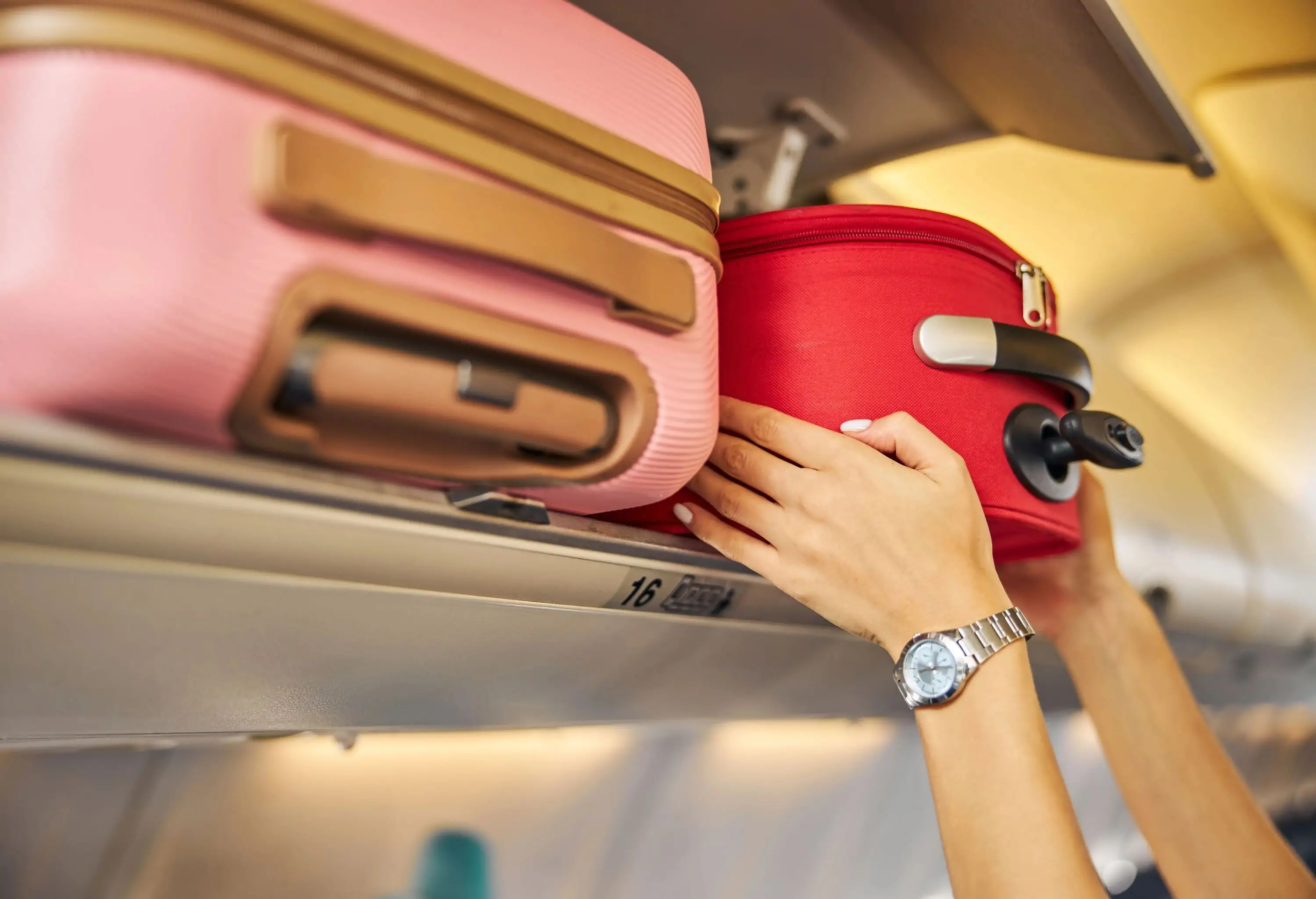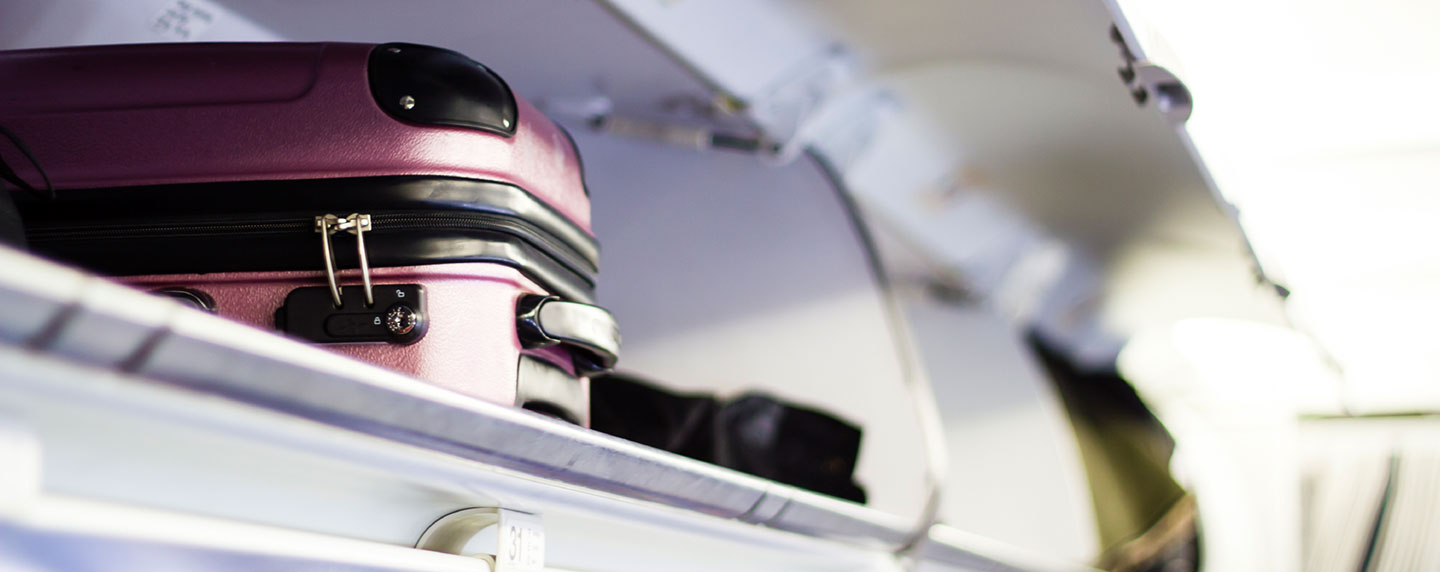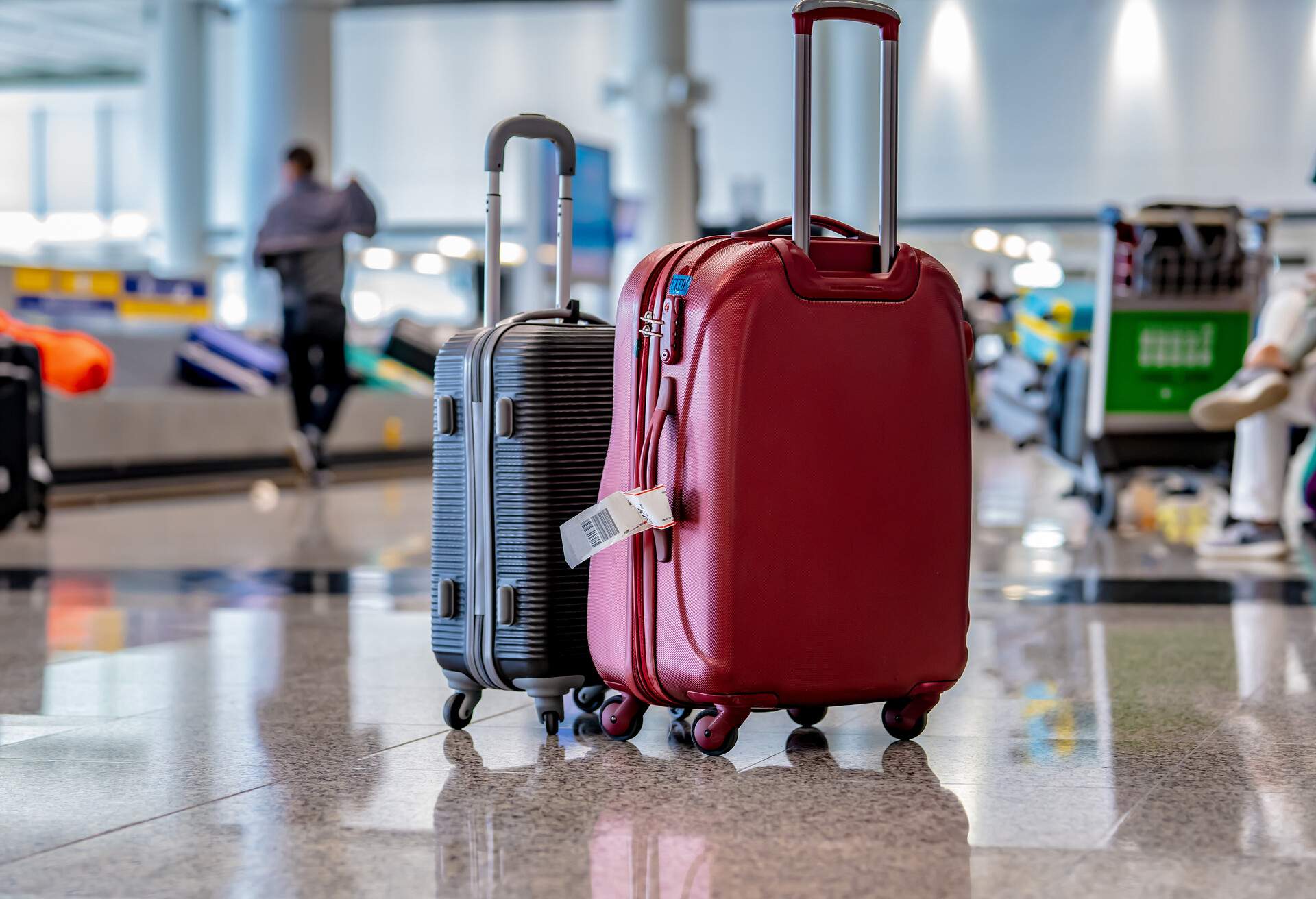Unclear if your cabin luggage is allowed on? This article has everything you need to know to avoid last-minute encounters with gate agents, excess baggage fees and a stressful start to your holiday. Use this airline-by-airline guide to see what size and how heavy your hand luggage can be.
Hand luggage types: big cabin bag, small cabin bag – what are the differences?
Most airlines follow very similar size regulations when it comes to a hand luggage bag. The majority go by a standard height, width and depth measurement. If you’re flying internationally, the standard size for a cabin bag suitcase or holdall is around 55 x 40 x 23cm. Remember, those dimensions usually include the handle, wheels and anything else that may protrude from your case, so don’t miss them from your measurements.
Large cabin bags and carry-on bags
Carry-on bags or large cabin bags refer to bigger bags or small suitcases that are to go in the overhead compartment. Large cabin bag size varies from airline to airline, so it’s important to check the exact measurements of your allowance before packing – but, as mentioned above, it’s generally around 55 x 40 x 23cm.
Before heading to your gate, it’s a good idea to make use of the baggage measurement guides that airlines often have near check-in desks. You can put your bag within the framework to check that it fits with the airline’s allowance.
Small cabin bags, under seat bags and personal items
You may see some airlines include small cabin bags, “one personal item” or an under seat cabin bag in their size guidelines for baggage allowance. These all refer to a small bag – typically a laptop bag, purse, small rucksack or briefcase. Airline size regulations for personal items vary wildly, but as long as it’s small enough to fit easily under the seat in front of you, there shouldn’t be any problems.
If you have something specific to carry such as a baby bag for nappies and food, a pair of crutches or something particularly fragile, airlines tend to be quite accommodating in including it in addition to your cabin bag and personal item allowance. To be on the safe side, you should always check directly with the airline in advance.
To recap, the practical difference between large cabin bags and a personal item is that the former is for storage in the overhead compartment and the latter for under the seat in front of you. A personal item is always free to take on board. Many airlines also include a carry-on luggage allowance in the ticket price. Some – especially small and budget airlines – charge extra, although it’s usually still cheaper than paying for checked luggage..
Carry-on rule updates – what’s new in 2025?

With so many different airlines and destinations, the rules around different aspects of carry-on luggage change regularly, including can bag size allowance. Here, you’ll find the latest changes to carry-on regulations around the world so you always have the latest information at your fingertips
EU airports reinstate 100ml liquid rule
New 3D scanner technology at airport security had promised an end to the 100ml limit for liquids in carry-on luggage. In 2024, many airports using the new scanners had lifted the ban, with new two litre limits in place. However, an issue with the new technology has led the EU to reinstate the 100ml limit across all 27 member countries and the UK. While this appears to be a temporary technical issue, there’s currently no set date for when it will be resolved and the liquid limits removed.
One-size-fits-all for carry-on bags?
There have long been discussions in both the US and EU about creating a policy to standardise carry-on luggage rules and regulations. The idea would be to force airlines and airports to adopt the same policy for baggages sizes, weights and costs. This would make it easier for passengers to plan and eliminate those dreaded hidden fees.
No regulations have yet emerged either side of the pond, however. I wouldn’t expect them to any time soon with such a complex worldwide problem to solve. But with conversations ongoing, there’s still hope of a smoother, more transparent system some time in the future. In the meantime, each airline continues to set its own size and weight limits.
Air Canada introduces carry-on fees
From January 2025, passengers buying a basic economy fare for Air Canada’s North American and sun routes will no longer be able to bring carry-on luggage on board. While a personal item is still allowed, basic economy customers will now have to check in their other bags for a fee before going through airport security. Arrive at the gate with an ineligible bag and you’ll face an elevated charge to check it in.
Multiple airlines are banning power banks
Major airlines around the world are taking measures against the risk of in-flight fires by reviewing power bank storage and usage on board. In March 2025, Eva Air and China Airlines followed the example set by Busan Airlines after its 2024 airplane fire and introduced new power bank restrictions.
Passengers can no longer pack power banks in checked luggage, and with many airlines even in the overhead compartment. Instead, you must instead store them either under the seat in front of you or in the seat pocket. Charging and using them onboard is also strictly prohibited.
Expect to see many more airlines follow suit in 2025 – particularly in Asia, where Thai Airways, Singapore Airlines and Air Asia have all announced similar policy changes.
Hand luggage size and weight restrictions for popular airlines
Most international airlines have a confusing array of fares and classes to choose from. These typically come with different hand luggage size and personal item restrictions. Be sure to know your luggage needs before you choose your fare to avoid paying extra for added bags later.
The most generous airlines for carry-on dimensions are British Airways and EasyJet. Although each also imposes a weight limit, they’re high enough to pose no packing problem. At the other end of the scale, perhaps surprisingly, is Qatar Airways. Its stated dimensions are out of sync with most other airlines (even if the linear measurement is comparable) and its carry-on weight very low at just 7kg.
Many airlines including Aer Lingus, Air Canada, Lufthansa, Scandinavian Airlines (SAS) and Turkish Airlines have close enough the same carry-on size measurements. Weight allowances vary, though. Converse to the domestic airlines, almost all the international airlines I’ve listed impose carry-on weight restrictions, and many on personal items as well. The only exception is Air Canada.
Not sure if your carry-on luggage size fits your airline policy?
To take the anxiety out of boarding and make sure your carry-on is always compliant, we created a fun Bag Measurement tool. Download the KAYAK app and you’ll never need a tape measure again.
Just open the app and tap on “Measure your bag.” Using your camera, capture your luggage and our app will do the maths for you to give your bag’s exact measurements. Handily, it also compares airline baggage policies in one place too, so you can quickly check your carry-on fits no matter who you’re flying with. Watch the video below to see how it works.
Disclaimer: prices and information are correct as of 11.04.2025 and may vary with time.









